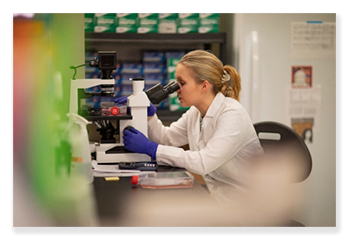The Alpha-1 Subunit of Membrane Na,K-ATPase Is Targeted by Nanosecond Electric Pulses
Document Type
Abstract
Publication Date
3-29-2023
Category
Postdoc
DOI
10.25776/9x7f-3v22
Conference Name
2023 Frank Reidy Research Center for Bioelectrics Retreat
Abstract
Electric pulses (EP) can modify the conformation of ion channels, potentially affecting membrane permeability. In our recent high-throughput screening of 328 gene knockouts (KOs) associated with membrane proteins in human monocytes U937, KO of Na,K-ATPase’s alpha 1 (ATP1A1) subunit was found to be less sensitive to nsEP (300ns, 7 kV/cm, at 20 Hz) - YoPro-1 (YP) uptake in ATP1A1 KO cells was up to 20% lower than control after 20 or 40 pulses. The subsequent experiments aimed to validate and further explore these findings. We measured YP uptake within 5 minutes after nsEP in ATP1A1 KO cells using time-lapse imaging on a scanning confocal microscope. YP fluorescence in ATP1A1 KO cells was 15% lower than in control cells, confirming the high-throughput screening results. We also used knock-down (KD) of ATP1A1 by transducing U937 cells with shRNA. In response to nsEP, YP uptake in ATP1A1 KD cells was reduced by 18% and 23% in high-throughput and confocal setups, respectively. Next, we tested whether the inhibition of Na,K-ATPase with ouabain affects YP uptake after nsEP. We found that the presence of ouabain did not reduce YP uptake after nsEP but increased it by 24%. Overall, our findings suggest that the role of ATP1A1 in YP uptake following nsEP exposure may be attributed to a structural feature of the protein rather than its physiological function as an ion pump.
Repository Citation
Silkuniene, Giedre; Mangalanathan, Uma; Pakhomov, Andrei G.; and Pakhomova, Olga N., "The Alpha-1 Subunit of Membrane Na,K-ATPase Is Targeted by Nanosecond Electric Pulses" (2023). 2023 Frank Reidy Research Center for Bioelectrics Retreat. 2.
https://digitalcommons.odu.edu/bioelectrics-2023retreat/2
ORCID
0000-0001-8436-9718 (Silkuniene), 0000-0003-0126-5660 (Mangalanathan), 0000-0003-3816-3860 (Pakhomov), 0000-0003-4950-4130 (Pakhomova)


